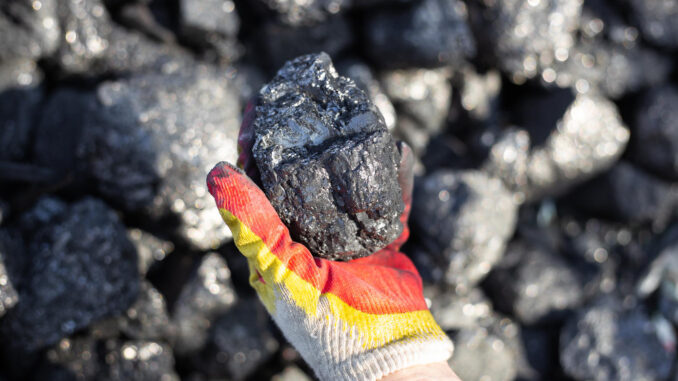
At the COP26 conference, a 190-strong coalition of countries, banks and investors lined up to give their support to plans to phase out coal power.
The timing was less than perfect. Today, just a few months later, the coal market is experiencing a dramatic resurgence.
Coal prices have jumped ten-fold
Global supply chain challenges and the war in Ukraine have ignited the coal market. Prices have jumped ten-fold in just a few months and producers are struggling to keep up. “There’s just not enough to go around,” Ernie Thrasher, the CEO of Xcoal Energy & Resources told the CERAWeek energy conference in Houston at the beginning of March.
The past few months have dispelled the myth that the world is ready to move on from coal. Despite the vast sums of money that are being invested in renewables, coal still accounts for one-third of global electricity generation, according to the International Energy Agency (IEA).
There is no doubt that as the world tries to move away from hydrocarbons, the outlook for coal will remain uncertain. However, as coal prices have jumped the outlook for miners, which many investors had written off, has improved markedly.
In some cases, these cash windfalls are helping companies reinvent themselves. US coal producer Peabody Energy (NYSE: BTU) lost over $100m in the fourth quarter of 2020, but in the last three months of 2021, it earned $513m. Management is using part of the windfall to launch a joint venture named R3 Renewables. The new venture plans to develop 3.3GW of solar energy and 1.6GW of battery storage capacity on Peabody’s former mine sites.
A phoenix rising from the ashes
The London-listed alternative to Peabody could be Thungela Resources (LSE: TGA). South Africa-focused Thungela, which means “to ignite” in isiZulu, was created as a sort of dumping ground for Anglo American’s (LSE: AAL) dirty coal assets.
The stock was almost cut in half on its first day, trading as low as 111p before recovering as investors, who’d been lumped with the stock following the spin-off, rushed for the exit. Since then, shares in the thermal coal company have charged higher by 1,048%. That’s not a typo.
Over the past year, Thungela has transitioned from being a loss-making enterprise with a net debt position, to being a profitable, highly cash-generative pure-play thermal coal business. Profit in 2021 totalled R6.9bn (£362m) and the firm ended the year with a net cash position of R8.7bn (£456m) against its current market capitalisation of £1.7bn.
Thungela set out with a policy to return at least 30% of earnings to investors as a dividend, but it has already outlined plans to return 63% of 2021’s income. That’s a dividend of 94p per share or yield of over 7.8%.
The company is also looking to secure its future by acquiring coal operations outside South Africa, and expanding into other commodities.
The company is using its windfall to change for the better
These changes should mitigate some of the reasons why investors have baulked at owning the stock in the past. The company’s fractious relations with labour unions in South Africa, its focus on coal, and need for substantial capital investment have given investors reason to pause for thought. Without investment, Thungela’s mines only have a remaining working life of five to 11 years.
Thungela also has to pay to clean up the environmental damage from its mining operations, and it has been criticised by short-seller Boatman Capital for understating the cost. Boatman has argued that the miner’s liabilities are as much as $1bn more than its estimates.
Yet with cash pouring into the group’s bank accounts, this risk is not as life-threatening as it was a year ago.
Despite the clear risks and ESG issues, there’s no denying that from a purely financial perspective, Thungela looks attractive. Profits are set to continue to grow this year as the world fights for coal supplies. That means more firepower to pursue growth plans – there could even be further shareholder returns.
The stock only trades at a historical price-to-earnings (p/e) ratio of 3.5. Even after factoring in all of the company’s risk factors, that looks cheap for a cash-rich growth stock.



